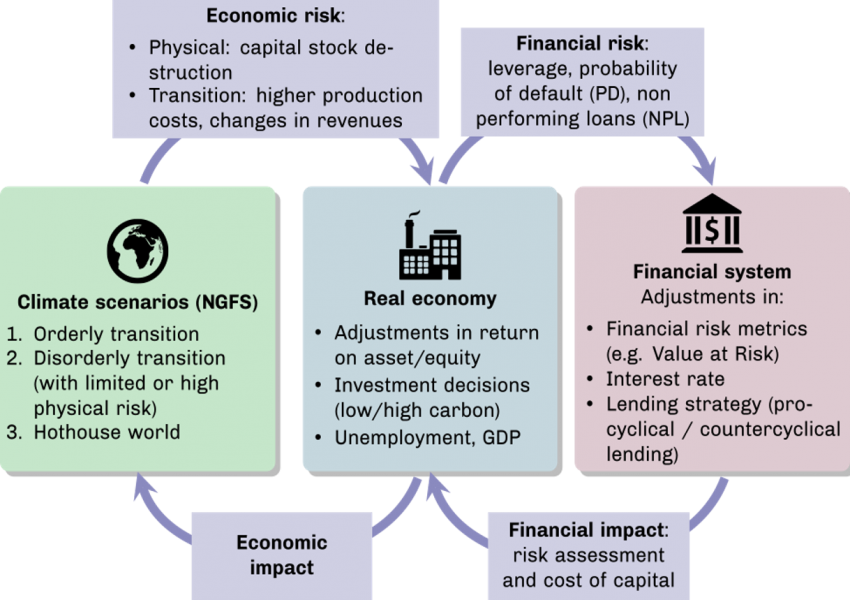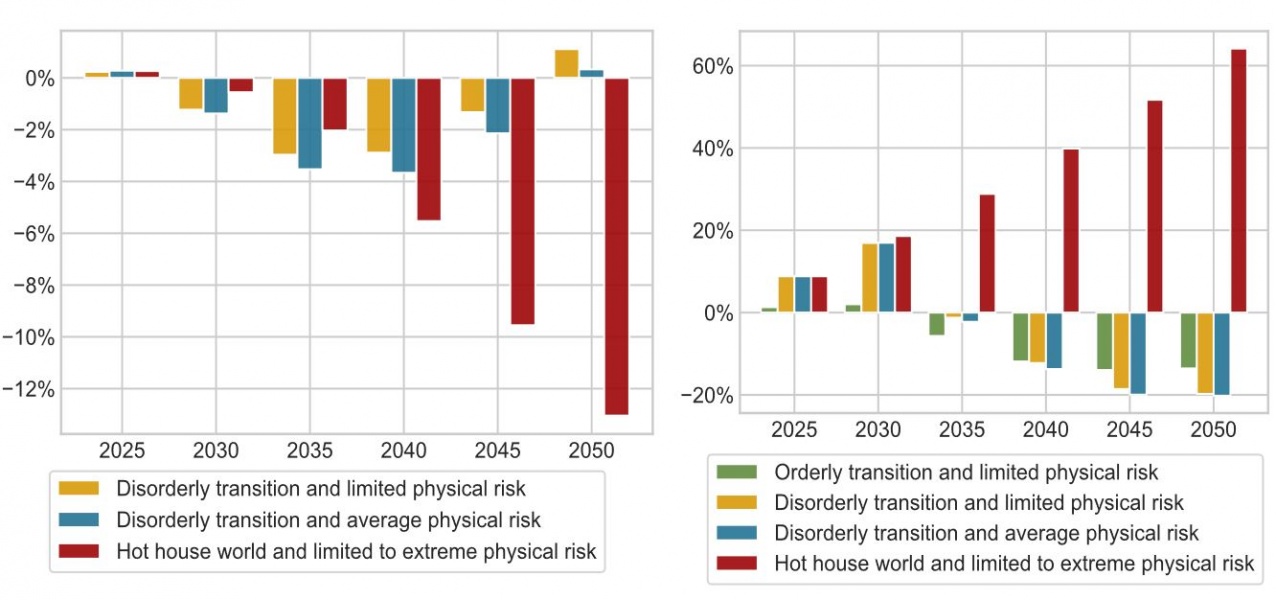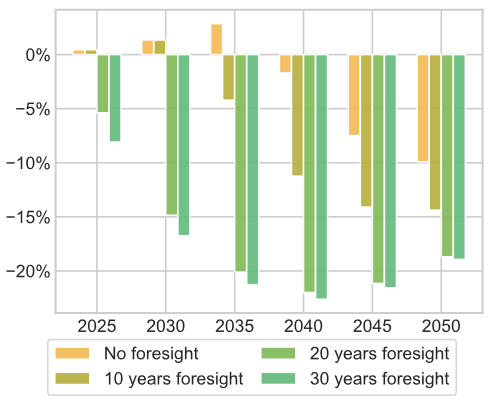References
Allen, Thomas et al. (2020). Climate-related scenarios for financial stability assessment: an application to France. Working Paper 774, Banque de France.
Alogoskoufis, Spyros et al. (2021). ECB economy-wide climate stress-test. Methodology and results. Occasional Paper Series 281. European Central Bank. DOI: 10.2866/460490.
Battiston S. Monasterolo, I., Riahi, K., and van Rujiven, B. (2021). Accounting for finance is key for climate mitigation pathways. Science, 372(6545), 918-920.
Battiston, S., Mandel, A., Monasterolo, I., Schütze, F., & Visentin, G. (2017). A climate stress-test of the financial system. Nature Climate Change, 7 (4), 283–288.
Boissinot, J., Goulard, S., Salin, M., Svartzman, R., & Weber, P. F. (2022). Aligning financial and monetary policies with the concept of double materiality: rationales, proposals and challenges.
Clerc L., Bontemps-Chanel A. L., Diot S., Overton G., Soares de Albergaria S., Vernet L., & Louardi M. (2021). A First assessment of financial risks stemming from climate change: The main results of the 2020 climate pilot exercise. ACPR-Banque de France Analyses et synthèses n. 122-2021.
Dunz, N., Naqvi, A., Monasterolo, I. (2021a). Climate sentiments, transition risk, and financial stability in a stock-flow consistent model. Journal of Financial Stability, 54, June 2021.
Dunz, N., Mazzocchetti, A., Monasterolo, I., Essenfelder, A., Raberto, M. (2021b). Compounding COVID-19 and climate risks: the interplay of banks’ lending and government’s policy in the shock recovery. Journal of Banking and Finance, 106303.
European Central Bank (2022a). Climate risk stress test. Report. European Banking Supervision, July 2022.
European Commission (2019). Guidelines on reporting climate-related information. Tech. rep. European Commission.
Gourdel, R., Monasterolo, I, Dunz, N., Mazzocchetti, A. and Parisi, L. (2022). The double materiality of climate physical and transition risks in the euro-area.
ECB working paper series, n. 2665, May 2022,
https://bit.ly/3owzUqf.
Kreibiehl, S., Yong Jung, T., Battiston, S., Carvajal, P. E., Clapp, C., Dasgupta, D., Dube, N., Jachnik, R., Morita, K., Samargandi, N., & Williams, M. (2022). Investment and finance. In IPCC, 2022: Climate Change 2022: Mitigation of Climate Change. Contribution of Working Group III to the Sixth Assessment Report of the Intergovernmental Panel on Climate Change [P.R. Shukla, J. Skea, R. Slade, A. Al Khourdajie, R. van Diemen, D. McCollum, M. Pathak, S. Some, P. Vyas, R. Fradera, M. Belkacemi, A. Hasija, G. Lisboa, S. Luz, J. Malley, (eds.)]. Cambridge University Press, Cambridge, UK and New York, NY, USA. doi: 10.1017/9781009157926.017.
Monasterolo, I., Raberto, M (2018). The EIRIN flow-of-funds behavioral model of green fiscal policies and green sovereign bonds. Ecological Economics, 144, 228-243.
NGFS (2020). NGFS Climate Scenarios for central banks and supervisors. NGFS Report, (June), 1–39. Network of Central Banks and Supervisors for Greening the Financial System, Paris, France.
Ranger, N., Mahul, O., Monasterolo, I. (2022). Assessing Financial Risks from Physical Climate Shock: A Framework for Scenario Generation. Equitable Growth, Finance & Institutions Insight. Washington, DC: World Bank.
https://openknowledge.worldbank.org/handle/10986/37041.




